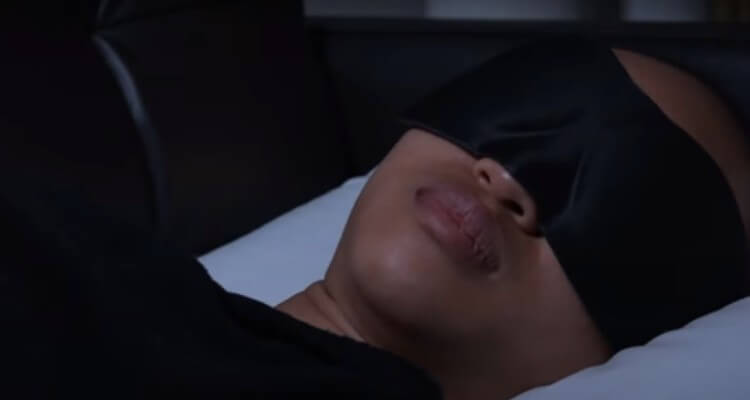Dream Science May Reveal the Root of Our Erotic Desires
As scientists develop interface to recall dreams, M.Christian considers its sexual potential.

For something that everyone spends one-third of their lives doing, it’s remarkable that we understand so little about sleep—and particularly about dreams.
This ignorance may well be on the way out, though, due to the groundbreaking work coming out MIT. There a team of researchers are working to improve on an age-old method to help people recall their dreams.
With so most of our sexuality lying in recesses of our unconscious, this approach could even someday lead us to comprehend the roots of erotic desires with unparalleled accuracy.
That knowledge could help us shape and potentially reshape our minds for the better.
From steel ball to Dormio
It’s not like philosophers, psychologists, neuroscientists—and every field of research betwixt and between them—haven’t been working on puzzling out the purpose and mechanics of dreams.
Their work is why we know as much as we do such as that they aren’t exclusive to the REM (Rapid Eye Movement) phase of sleep.
We also understand we can have more six or more at a stretch, and lucid dreams—where the dreamer is aware they’re dreaming—occur somewhere between REM and full consciousness.
Dreaming big
Other kinds of big thinkers, or maybe just big dreamers, depending on who you ask, were researchers in their own right: Surrealist Salvadore Dali, Edgar Allen Poe, and others employed what’s called the “steel ball” method.
To try this yourself, next time you go to bed hold a moderately heavy object in one hand.
What it is doesn’t matter, as long as when you sleep your relaxed muscles eventually drop it and the noise is loud enough to snap you awake. The sudden interruption, fingers crossed, will make it easier to remember your dream.
Adam Horowitz of the MIT Dream Lab took the steel ball method one step further by developing Dormio.
Worn like a glove, his device monitors a subject’s heart rate, skin conductivity, and muscle tension to track their descent towards a hypnogogic state—the border between wakefulness and semi-conscious dreaming.
Detecting an approaching dream state, Dormio then plays a sound or pre-recorded spoken word. According to Horowitz, follow-up interviews revealed the dreaming subject had unconsciously heard these stimuli.

“Dreaming is really just thinking at night,” Horowitz told Techxplore.
When you go inside, you come out different in the morning. But we have not been asking questions about the experience of that transformation of information or the thoughts that guide it.
Horowitz postulates a time when Dormio improves memory, increases creativity, and may provide fresh insights into how the mind operates. With that knowledge, it could then help develop us all consciously interact with all the glorious phantasmagoria of our unconscious.
The sky is the limit
Speculation-wise, it’s hard to know where to start.
We already mentioned that this technology might someday be a fantastic tool to gain a greater understanding of how we process things like gender identity or sexual orientation. Therapists could use it to treat patients struggling with self-acceptance issues or as a means to process sexual trauma.
As knowing and loving thyself lies at the center of many a happy sex life, what better way to do that than looking directly into the primordial structure of our personalities?
With a futuristic offshoot of Dormio, we could study, in remarkable detail, our erotic dreams.
Then, with this knowledge, putting together an accurate picture of where these unconscious desires might have sprung from, what to do possibly do with these impulses while awake or to therapeutically use them to overcome painful feelings of shame or guilt.
The end goal here to accept them as revealing an essential part of who we are.
And think of the creative opportunities!
As Horowitz postulated, when we’ll remember our dreams with the same clarity as we can see the world around us, we’ll see the beginning of erotic art renaissance.
Even Dali himself would be shocked—pleasantly of course—by the sexual imagery revealed by an unfettered artist’s mind.
We could also use dreams as sexual testbed.
Put in new experiences, in person or via adult entertainment, run them through your dreams, and then examine what comes out: a new sexuality to investigate or, if your subsconscious didn’t take to it, another bit of self-knowledge?
Further afield but not beyond the bounds of possibility, why not combine Dormio’s technological ancestor with a new virtual reality approach?
The concept here to enhance our minds rather than the resolution of the VR hardware: your unconsciousness tweaked to experience way more, and with dreamlike vividness, more than just what you were seeing
Let’s sleep on it
As with all technology, what Horowitz and other researchers are developing isn’t inherently possible or negative.
Instead, it’s up to us, through how we decide to use it to tip the scale toward it eventually being either a dream come true or a living a nightmare.
In the meantime, we need to applaud this kind of work for doing an unequivocal good: helping scientists, and through them ourselves, know what’s on our minds—and in them as well.
All that we see or seem is but a dream within a dream.
―Edgar Allan Poe
Image sources: ACM SIGCHI
















